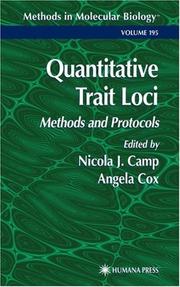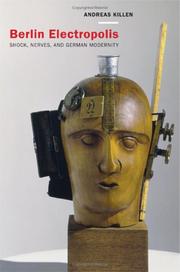| Listing 1 - 3 of 3 |
Sort by
|
Book
ISBN: 022654589X Year: 2018 Publisher: Chicago : University of Chicago Press,
Abstract | Keywords | Export | Availability | Bookmark
 Loading...
Loading...Choose an application
- Reference Manager
- EndNote
- RefWorks (Direct export to RefWorks)
The clerk attended his desk and counter at the intersection of two great themes of modern historical experience: the development of a market economy and of a society governed from below. Who better illustrates the daily practice and production of this modernity than someone of no particular account assigned with overseeing all the new buying and selling? In Accounting for Capitalism, Michael Zakim has written their story, a social history of capital that seeks to explain how the “bottom line” became a synonym for truth in an age shorn of absolutes, grafted onto our very sense of reason and trust. This is a big story, told through an ostensibly marginal event: the birth of a class of “merchant clerks” in the United States in the middle of the nineteenth century. The personal trajectory of these young men from farm to metropolis, homestead to boarding house, and, most significantly, from growing things to selling them exemplified the enormous social effort required to domesticate the profit motive and turn it into the practical foundation of civic life. As Zakim reveals in his highly original study, there was nothing natural or preordained about the stunning ascendance of this capitalism and its radical transformation of the relationship between “Man and Mammon.”
Clerks --- Capitalism --- History --- Social aspects --- accounting. --- capitalism. --- individualism. --- knowledge. --- market economy. --- masculinity. --- nervous disorders. --- office work. --- paperwork. --- statistics.

ISBN: 0896039277 9786610821389 1280821388 1592591760 Year: 2002 Publisher: Totowa, N.J. : Humana Press,
Abstract | Keywords | Export | Availability | Bookmark
 Loading...
Loading...Choose an application
- Reference Manager
- EndNote
- RefWorks (Direct export to RefWorks)
Statistical methods for the analysis of quantitative trait locus (QTL), in conjunction with genome-wide screening technologies, are today yielding exciting results in the study of human disease, experimental organisms, and agriculture. In Quantitative Trait Loci: Methods and Protocols, Drs. Nicola Camp and Angela Cox have assembled a highly experienced panel of statistical geneticists who demonstrate in a step-by-step fashion how to use this powerful methodology and associated software for the detection and fine mapping of quantitative trait loci. Writing for the nonmathematician, these experts guide the investigator from the design stage of a project onwards, providing detailed explanations of how best to proceed with each specific analysis, to find and use appropriate software, and to interpret results. Worked examples, citations to key papers, and useful variations and/or extensions to standard methods are included that ease the reader toward understanding and successful studies. Among the cutting-edge techniques presented are QTDT methods, variance components methods, and the Markov chain Monte Carlo method for joint linkage and segregation analysis. Up-to-date and highly practical, Quantitative Trait Loci: Methods and Protocols makes available to nonmathematical investigators a step-by-step guide to the productive use today of all the latest techniques for localizing genes involved in complex quantitative traits.
575.22 --- 616.8-056.7 --- 581.154 --- 575.17 --- 591.15 --- Genetics --- -Gene mapping --- Phenotype --- Phenotypes --- Genotype-environment interaction --- Chromosome mapping --- Genetic mapping --- Genome mapping --- Linkage mapping (Genetics) --- Mapping, Gene --- 591.15 Variation. Heredity --- Variation. Heredity --- 575.17 Population genetics. Genetic processes in populations --- Population genetics. Genetic processes in populations --- 581.154 Hereditary variations. Mutations. --- Hereditary variations. Mutations. --- 616.8-056.7 Hereditary, congenital nervous disorders. Genetic neuropathology --- Hereditary, congenital nervous disorders. Genetic neuropathology --- 575.22 Genotypic variation. Genotype --- Genotypic variation. Genotype --- Biology --- Embryology --- Mendel's law --- Adaptation (Biology) --- Breeding --- Chromosomes --- Heredity --- Mutation (Biology) --- Variation (Biology) --- Statistical methods --- Technique --- Gene mapping. --- Phenotype. --- Statistical methods. --- Gene mapping --- Hereditary variations. Mutations --- Human genetics. --- Human Genetics. --- Heredity, Human --- Human biology --- Physical anthropology

ISBN: 1282759329 9786612759321 0520931637 1598757814 9780520931633 1423727614 9781423727613 9781598757811 9780520243620 0520243625 9781282759329 6612759321 Year: 2006 Publisher: Berkeley University of California Press
Abstract | Keywords | Export | Availability | Bookmark
 Loading...
Loading...Choose an application
- Reference Manager
- EndNote
- RefWorks (Direct export to RefWorks)
Berlin Electropolis ties the German discourse on nervousness in the late nineteenth and early twentieth centuries to Berlin's transformation into a capital of the second industrial revolution. Focusing on three key groups-railway personnel, soldiers, and telephone operators-Andreas Killen traces the emergence in the 1880's and then later decline of the belief that modernity caused nervous illness. During this period, Killen explains, Berlin became arguably the most advanced metropolis in Europe. A host of changes, many associated with breakthroughs in technologies of transportation, communication, and leisure, combined to radically alter the shape and tempo of everyday life in Berlin. The resulting consciousness of accelerated social change and the shocks and afflictions that accompanied it found their consummate expression in the discourse about nervousness. Wonderfully researched and clearly written, this book offers a wealth of new insights into the nature of the modern metropolis, the psychological aftermath of World War I, and the operations of the German welfare state. Killen also explores cultural attitudes toward electricity, the evolution of psychiatric thought and practice, and the status of women workers in Germany's rapidly industrializing economy. Ultimately, he argues that the backlash against the welfare state that occurred during the late Weimar Republic brought about the final decoupling of modernity and nervous illness.
Social Change --- Psychiatry --- Mental Fatigue --- History, 20th Century. --- History, 19th Century. --- Electroconvulsive Therapy --- Anxiety --- Neurasthenia --- Soldiers --- Telephone operators --- Railroads --- Social change --- Industrialization --- Electrification --- Electrotherapeutics --- Mental fatigue --- Medicine and psychology --- Mental health --- Psychology, Pathological --- Armed Forces personnel --- Members of the Armed Forces --- Military personnel --- Military service members --- Service members --- Servicemen, Military --- Armed Forces --- Telephone companies --- Iron horses (Railroads) --- Lines, Railroad --- Rail industry --- Rail lines --- Rail transportation --- Railroad industry --- Railroad lines --- Railroad transportation --- Railway industry --- Railways --- Communication and traffic --- Concessions --- Public utilities --- Transportation --- Trusts, Industrial --- Change, Social --- Cultural change --- Cultural transformation --- Societal change --- Socio-cultural change --- Social history --- Social evolution --- Electric power distribution --- Electric power production --- Electrotherapy --- Faradization --- Electricity in medicine --- Electrostatics --- Physical therapy --- Therapeutics, Physiological --- Neural stimulation --- Fatigue, Mental --- Intellectual fatigue --- Mental exhaustion --- Mental overwork --- Overwork, Mental --- Fatigue --- Breakdown, Nervous --- Exhaustion, Nervous --- Nervous breakdown --- Nervous exhaustion --- Nervous prostration --- Neurasthenic neuroses --- Prostration, Nervous --- Asthenia --- Somatoform disorders --- Industrial development --- Economic development --- Economic policy --- Deindustrialization --- 19th Cent. History (Medicine) --- 19th Cent. History of Medicine --- 19th Cent. Medicine --- Historical Events, 19th Century --- History of Medicine, 19th Cent. --- History, Nineteenth Century --- Medical History, 19th Cent. --- Medicine, 19th Cent. --- 19th Century History --- 19th Cent. Histories (Medicine) --- 19th Century Histories --- Cent. Histories, 19th (Medicine) --- Cent. History, 19th (Medicine) --- Century Histories, 19th --- Century Histories, Nineteenth --- Century History, 19th --- Century History, Nineteenth --- Histories, 19th Cent. (Medicine) --- Histories, 19th Century --- Histories, Nineteenth Century --- History, 19th Cent. (Medicine) --- Nineteenth Century Histories --- Nineteenth Century History --- 20th Cent. History (Medicine) --- 20th Cent. History of Medicine --- 20th Cent. Medicine --- Historical Events, 20th Century --- History of Medicine, 20th Cent. --- History, Twentieth Century --- Medical History, 20th Cent. --- Medicine, 20th Cent. --- 20th Century History --- 20th Cent. Histories (Medicine) --- 20th Century Histories --- Cent. Histories, 20th (Medicine) --- Cent. History, 20th (Medicine) --- Century Histories, 20th --- Century Histories, Twentieth --- Century History, 20th --- Century History, Twentieth --- Histories, 20th Cent. (Medicine) --- Histories, 20th Century --- Histories, Twentieth Century --- History, 20th Cent. (Medicine) --- Twentieth Century Histories --- Twentieth Century History --- history. --- therapy. --- History. --- Employees --- Psychological aspects. --- Social aspects --- Germany. --- berlin. --- brain. --- electricity. --- europe. --- factory workers. --- german history. --- german. --- germany. --- great war. --- history of medicine. --- industrial revolution. --- insanity. --- labor. --- lunacy. --- madness. --- manichean teleology. --- medical community. --- metropolis. --- modernity. --- nervous disorders. --- nervous illness. --- nervousness. --- nonfiction. --- psyche. --- psychiatry. --- psychology. --- ptsd. --- railways. --- science. --- shell shock. --- social change. --- technology. --- telephone operators. --- trauma. --- veterans. --- weimar republic. --- welfare state. --- women workers. --- world war one. --- ww1.
| Listing 1 - 3 of 3 |
Sort by
|

 Search
Search Feedback
Feedback About UniCat
About UniCat  Help
Help News
News